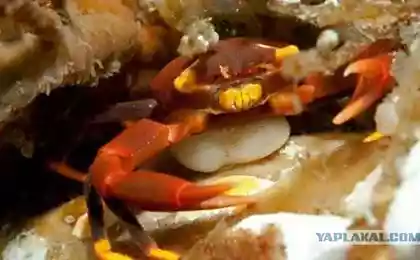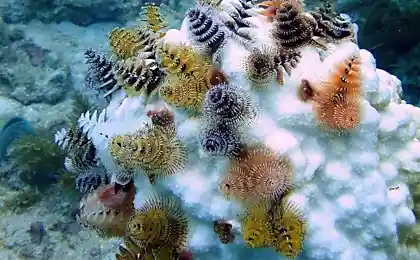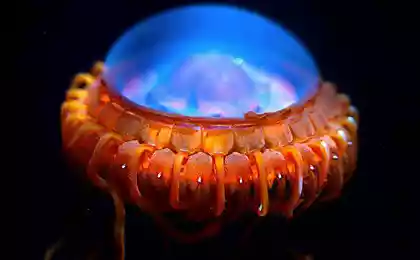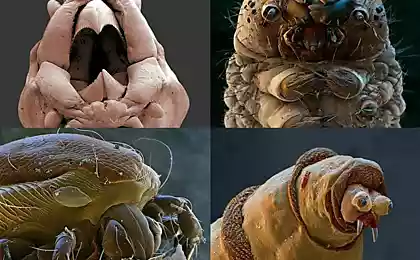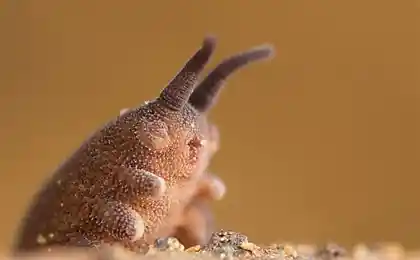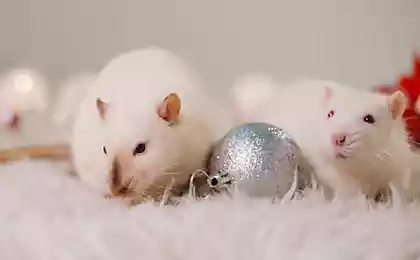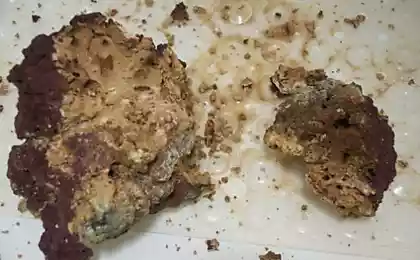450
New worm
Writes Helga6
Soon the New Year, so this article will focus on one animal that is entirely I associate with this holiday.
What you see in front of you is not another beautiful underwater plants as Christmas trees, but a real pet - a tubular marine polychaete worm families Sabellidae.
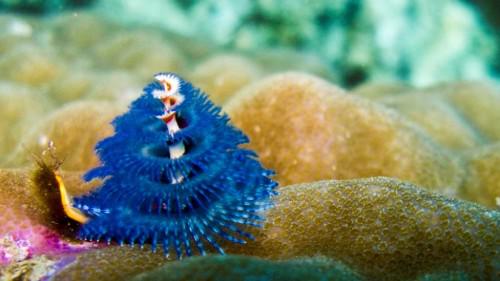
Tubular polychaete marine worms or worm "Christmas tree" (lat. Spirobranchus giganteus) (Eng. Christmas tree worm)
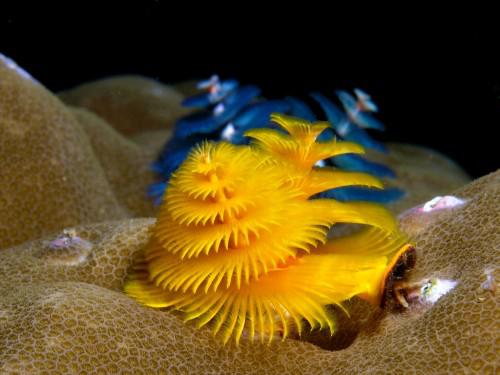
"Christmas trees" are common in the tropical Indian and western Pacific Oceans. You can find them in shallow water among coral in crystal-clear water, poor in nutrients.
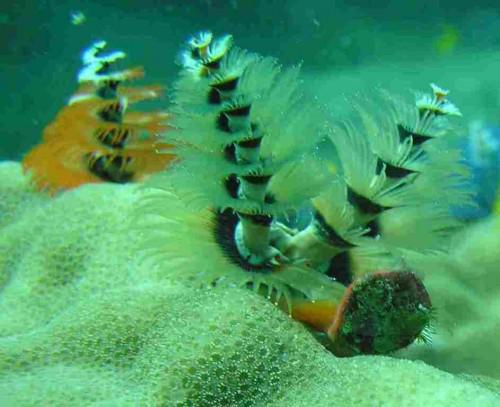
They live in calcareous tube. At the same time, the basic building materials are calcium ions and carbonate ions, which removes the worm from the waters
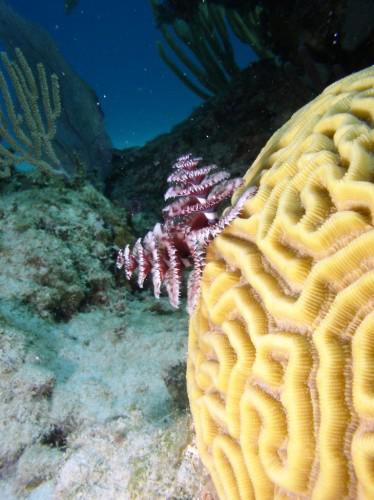
Their link is the organic component extracted from two glands located in the mouth. During the growth of new pieces are added in small tubes rings that are placed on the end of the old tube.
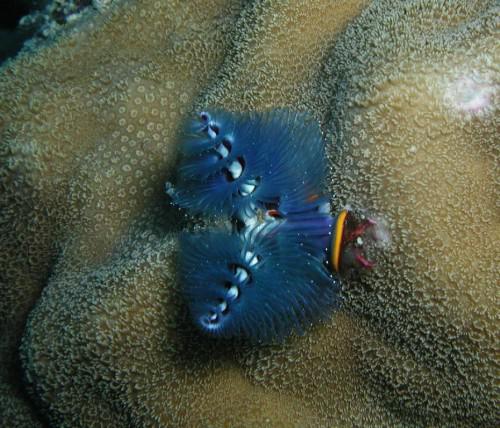
But before you start to build their shelter, the larva worm coral carefully chooses for his house. She only suitable weakened or dead polyps because they are easier to integrate their houses-tube.

There are whole colonies of these worms
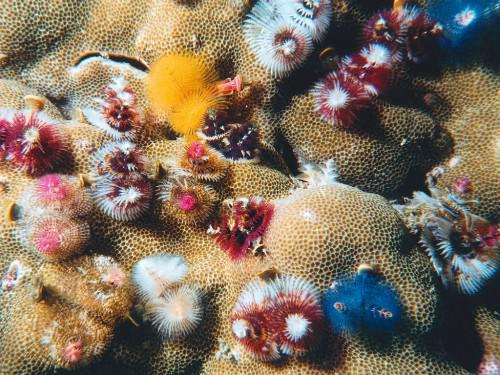
Over time, the corals grow around the tube, becoming less visible, but on the surface there are only "Christmas trees."

The fact that so much like a Christmas tree, a gill rays, which differ in 2 separate spiral
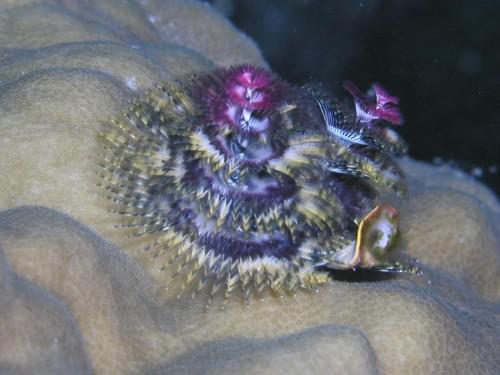
They are also the respiratory system and power supply (of water cling to small particles of organic matter).
By the way, numerous colonies of worms of one color rarity
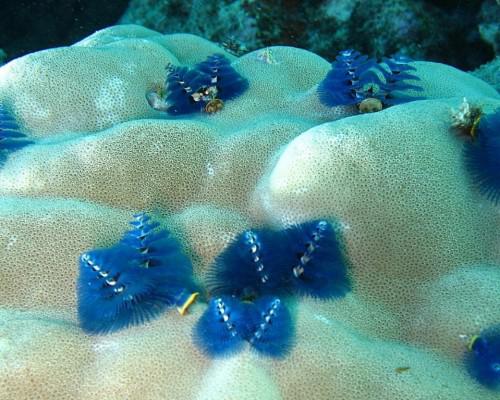
Their color can be very diverse: bright blue, red and yellow, with shades from white to pink and blue and even black, etc. It may be that one gill rays worm have different colors.

Another striking feature is the presence of these worms on the tube lids tightly closing the entrance to the tube. At the slightest danger, the worm immediately retract its gill rays spiral inside the tube, thereby closing the lid.

Living Spirobranchus giganteus in different ways, it all depends on the type: the smaller worms - a few months, and the larger species - up to 4-8 years.
via
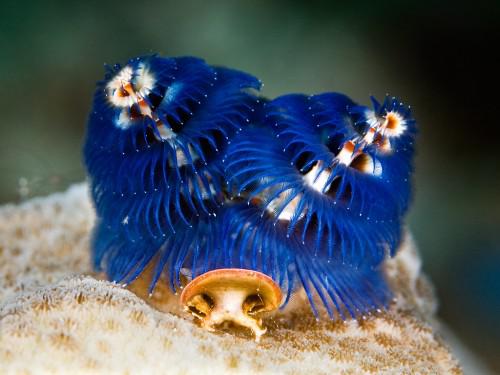
Source:
Soon the New Year, so this article will focus on one animal that is entirely I associate with this holiday.
What you see in front of you is not another beautiful underwater plants as Christmas trees, but a real pet - a tubular marine polychaete worm families Sabellidae.

Tubular polychaete marine worms or worm "Christmas tree" (lat. Spirobranchus giganteus) (Eng. Christmas tree worm)

"Christmas trees" are common in the tropical Indian and western Pacific Oceans. You can find them in shallow water among coral in crystal-clear water, poor in nutrients.

They live in calcareous tube. At the same time, the basic building materials are calcium ions and carbonate ions, which removes the worm from the waters

Their link is the organic component extracted from two glands located in the mouth. During the growth of new pieces are added in small tubes rings that are placed on the end of the old tube.

But before you start to build their shelter, the larva worm coral carefully chooses for his house. She only suitable weakened or dead polyps because they are easier to integrate their houses-tube.

There are whole colonies of these worms

Over time, the corals grow around the tube, becoming less visible, but on the surface there are only "Christmas trees."

The fact that so much like a Christmas tree, a gill rays, which differ in 2 separate spiral

They are also the respiratory system and power supply (of water cling to small particles of organic matter).
By the way, numerous colonies of worms of one color rarity

Their color can be very diverse: bright blue, red and yellow, with shades from white to pink and blue and even black, etc. It may be that one gill rays worm have different colors.

Another striking feature is the presence of these worms on the tube lids tightly closing the entrance to the tube. At the slightest danger, the worm immediately retract its gill rays spiral inside the tube, thereby closing the lid.

Living Spirobranchus giganteus in different ways, it all depends on the type: the smaller worms - a few months, and the larger species - up to 4-8 years.
via

Source:

